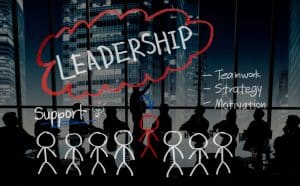10 Must-Have Soft Skills That Will Transform Your Career Path: From Communication to Leadership

Soft skills are non-technical traits and abilities that influence how individuals interact with others and navigate their work environment.
These include communication, teamwork, adaptability, and emotional intelligence. Unlike hard skills, which are specific, teachable abilities such as coding or accounting, soft skills are more intrinsic and involve personal attributes and interpersonal skills.
Soft skills play a critical role in modern careers. They can determine how effectively you engage with colleagues, manage your time, or handle stress. Learn more about them below and check out which ones you should develop!
How Soft Skills Complement Technical Abilities?
While technical skills are essential for executing specific tasks, soft skills enhance technical proficiency by enabling better collaboration and problem-solving.
For example, a software developer may be highly skilled in coding, but if they lack effective communication skills, they might struggle to work with a team or convey their ideas clearly.
Soft skills such as active listening can complement technical abilities by ensuring that tasks are completed effectively and with a higher degree of accuracy.
Emotional intelligence allows individuals to manage their emotions and those of others, leading to improved workplace relationships and a more inclusive work culture.
By blending soft skills with technical expertise, professionals can tackle complex challenges more efficiently and drive innovation within their organizations.
Why Employers Increasingly Value Soft Skills Over Hard Skills?
The modern workplace is characterized by rapid changes, diverse teams, and complex projects.
As a result, employers are recognizing the heightened importance of soft skills over traditional hard skills.
Soft skills contribute to a positive work environment by fostering teamwork, adaptability, and leadership.
Organizations are aware that technical skills can often be taught, whereas soft skills require a more profound level of personal development.
Employees who possess strong soft skills are adaptable, able to work well under pressure, and can effectively handle interpersonal dynamics. This adaptability and resilience are crucial in navigating the uncertainties of today’s work environment.
Moreover, employees with well-developed soft skills contribute to lower turnover rates, higher job satisfaction, and better team cohesion.
As companies prioritize long-term success and employee well-being, soft skills have become increasingly valued in recruitment and professional development initiatives.
Understanding the intrinsic value of soft skills is the first step towards leveraging them for professional growth and workplace harmony.
As we explore further, we will delve into specific soft skills starting with effective communication and how it lays the foundation for professional success.
Effective Communication: The Foundation of Professional Success
Effective communication is essential for professional success, enhancing collaboration, fostering relationships, and driving productivity.
Mastering this soft skill requires an understanding of its key components, the ability to differentiate and employ various strategies for verbal and written communication, and the cultivation of active listening.
Key Components of Clear and Impactful Communication
Effective communication involves expressing your message in a way that is easily understood and well-received by your audience. The key components include:
- Clarity: Articulate your thoughts clearly and concisely to prevent misunderstandings.
- Conciseness: Eliminate unnecessary information to keep your communication brief and to the point.
- Consistency: Ensure your messages are consistent in both content and delivery to build trust and reliability.
- Empathy: Gauge the emotions of your audience and respond appropriately to foster a positive interaction.
- Feedback: Encourage and incorporate feedback to improve and confirm understanding.
Verbal vs. Written Communication Strategies
Both verbal and written communication require distinct approaches to be effective:
When communicating verbally, consider the following strategies:
- Tone: Use a friendly and professional tone to convey respect and confidence.
- Body Language: Maintain appropriate eye contact, gestures, and posture to reinforce your message.
- Pace and Volume: Speak at a moderate pace and volume for better comprehension and engagement.
For effective written communication, keep the following in mind:
- Structure: Organize content logically with clear headings, bullet points, and paragraphs.
- Clarity: Use simple and precise language to avoid ambiguity.
- Professionalism: Maintain a formal yet approachable tone, and proofread to eliminate errors.
Active Listening as a Crucial Communication Skill
Active listening is as important as speaking in communication. It involves:
- Attention: Focus fully on the speaker, avoiding interruptions and distractions.
- Acknowledgment: Show that you are listening through nodding, maintaining eye contact, and providing verbal affirmations (e.g., “I see,” “Interesting”).
- Reflection: Summarize and reflect on what is said to confirm understanding.
- Questions: Ask open-ended questions to encourage further discussion and clarify points.
By mastering these facets of effective communication, you can enhance your professional interactions, foster a collaborative work environment, and drive your career forward.
Next, we will explore building strong teamwork abilities—key for navigating dynamic team settings and contributing effectively.
Building Strong Teamwork Abilities

Successful collaboration relies on several key elements that enhance team productivity and morale.
Trust is fundamental; without it, transparent communication and mutual support are hindered. Moreover, setting clear goals ensures everyone is aligned and knows what they are working towards, fostering a sense of purpose.
Effective collaboration also requires regular and open communication, where team members can share ideas, give feedback, and address issues promptly.
Additionally, defining roles and responsibilities clearly helps prevent misunderstandings and ensures that each team member knows their contributions are valued.
Navigating Diverse Team Dynamics
Modern workplaces are often composed of team members from various backgrounds, experiences, and perspectives.
Navigating this diversity is crucial for harnessing the full potential of the team. Understanding and respecting cultural differences can improve interactions and prevent conflicts.
Encouraging an inclusive environment where everyone feels heard and valued promotes a harmonious team dynamic.
Flexibility and adaptability are important in changing environments, as they allow team members to adjust their approaches when necessary.
Contributing Effectively in Group Settings
To contribute effectively in group settings, it’s important to actively participate while being open to others’ ideas.
Assertiveness helps in sharing your insights, but it should be balanced with respect for others’ opinions.
Being accountable for your tasks and meeting deadlines demonstrates reliability. Moreover, supporting your team members and offering assistance when needed fosters a cooperative spirit.
Problem-solving collaboratively and being willing to compromise further ensures the team achieves its common objectives.
Building these teamwork abilities not only helps streamline processes within the team but also strengthens professional relationships and improves overall job satisfaction.
These skills lay a solid foundation for future chapters, which explore advanced interpersonal dynamics in the workplace.
Mastering the Art of Influencing Without Authority
Influencing without authority begins with establishing credibility and trust among colleagues.
Your reputation acts as the foundation for your influence, so it’s essential to demonstrate competence, reliability, and integrity consistently.
Showcasing your expertise through problem-solving and performance in your role builds a reliable and knowledgeable image.
Communicating openly and honestly fosters transparency, while consistently delivering on promises helps in earning trust.
Persuasion Techniques that Maintain Professional Relationships
Influencing decisions without direct authority involves mastering persuasion techniques that place a premium on mutual respect and understanding.
One effective method is active listening, which helps you understand colleagues’ perspectives and encourages collaborative discussions.
Clearly articulating the benefits of your ideas and demonstrating their alignment with team or organizational goals can be compelling.
Another approach is using stories and analogies to make your point more relatable and memorable, thereby fostering a deeper connection.
Navigating Organizational Dynamics Effectively
Understanding the organization’s structure, culture, and unwritten rules is crucial for successfully influencing without authority.
Cultivating relationships with key stakeholders by engaging in regular, purposeful interactions can help you navigate these dynamics more effectively.
It’s important to identify potential allies and understand their motivations to align your proposals with their interests.
Adapting your influence strategies to fit the unique cultural and structural elements of your organization ensures that you navigate these dynamics smoothly while maintaining professional relationships.
This nuanced approach bridges the gap between persuasion and genuine collaboration, placing you in a strategic position to lead and inspire, regardless of your formal authority.
Developing Emotional Intelligence in the Workplace
Emotional intelligence (EI) is a key driver of professional success, signifying the ability to understand and manage your own emotions.
Awareness of your emotional state aids in maintaining control, especially in challenging situations.
Developing methods for self-regulation, like deep breathing or taking a moment to pause, can prevent reactions that may be detrimental in a professional environment.
Recognizing and Responding to Others’ Emotional States
Equally important to managing your own emotions is the ability to recognize and respond to the emotions of others.
This can be achieved by paying attention to non-verbal cues, such as body language and facial expressions, which often reveal true feelings.
Engaging in empathetic listening allows you to provide appropriate responses that demonstrate understanding and support, even if the underlying issue is not immediately apparent.
Building Stronger Professional Relationships Through Empathy
Empathy is the cornerstone of emotional intelligence. Building relationships through empathy involves showing genuine concern for colleagues’ well-being, seeking to understand their perspectives, and providing support where needed.
This fostered trust encourages open communication, collaboration, and a more cohesive work environment.
Consistently demonstrating empathy not only strengthens individual relationships but also contributes to a positive organizational culture.
As you continue to advance these skills, the next important area involves enhancing problem-solving and critical thinking abilities, essential for tackling workplace challenges effectively.
Problem-Solving and Critical Thinking
Effective problem-solving starts with a systematic approach to workplace challenges.
An analytical mindset involves breaking down complex problems into manageable parts, examining the underlying causes, and evaluating different perspectives.
This approach not only enhances clarity but also facilitates the identification of root issues, rather than merely addressing symptoms.
Employees who adopt analytical thinking are better equipped to develop logical, evidence-based solutions that can withstand scrutiny and contribute to long-term success.
Creative Solution Development
While analysis is essential, creativity plays an equally important role in solving problems. Creative solution development involves thinking outside the box and exploring unconventional strategies.
Employing techniques such as brainstorming, mind mapping, and lateral thinking can lead to innovative solutions that might not emerge through traditional methods.
By fostering a culture that encourages creativity, organizations can leverage diverse ideas and approaches, resulting in more comprehensive and effective solutions to workplace challenges.
Decision-Making Processes in Professional Settings
Decision-making is a critical component of problem-solving and requires a balance of intuition and rationality.
In professional settings, effective decision-making processes involve:
- Identifying Objectives: Clearly defining what needs to be achieved ensures that decisions align with organizational goals.
- Gathering Information: Collecting relevant data and insights from reliable sources to inform the decision.
- Evaluating Options: Assessing the potential outcomes, risks, and benefits of each alternative.
- Making the Decision: Choosing the best option based on the analysis and aligned with organizational objectives.
- Implementing and Reviewing: Executing the decision while monitoring the progress and making necessary adjustments.
By following these structured steps, professionals can make informed decisions that contribute to organizational success and personal growth.
Transitioning into the next key soft skill, adaptability, allows professionals to navigate evolving circumstances and maintain their effectiveness in dynamic environments.
Adaptability and Flexibility
Adapting to workplace changes is indispensable in today’s fast-paced professional environment.
Employers highly value those who can seamlessly transition when new technologies, processes, or organizational structures emerge.
Embracing change requires an open mindset and a proactive approach. It means viewing change as an opportunity for growth rather than a threat.
Being adaptable allows you to bring innovative ideas to the table and stay relevant in your field, thus making you an asset to any team.
Developing Resilience During Transitions
Resilience is the ability to recover from setbacks and stay focused amid adversity. Developing this trait is crucial for managing transitions smoothly. Cultivating resilience involves several key practices:
- Maintaining a Positive Attitude: Keep your focus on the possibilities that change can bring instead of the challenges.
- Learning Continuously: Stay updated with industry trends and acquire new skills to prepare for shifts.
- Building a Support Network: Foster relationships with colleagues who provide encouragement and perspective.
These practices enable you to stay composed and maintain performance, even when faced with unexpected changes.
Maintaining Productivity in Dynamic Environments
To remain productive in ever-changing conditions, it’s essential to adopt strategies that maintain efficiency and minimize disruptions.
Identify the most crucial tasks and focus on them first to ensure that essential responsibilities are met.
Use tools like to-do lists, calendars, and project management software to keep track of your tasks and deadlines.
Be willing to adjust your routine and try new approaches to find more effective methods of completing tasks.
By incorporating these strategies, you can thrive in dynamic environments without sacrificing productivity.
Adapting and remaining flexible not only enhances your own career but also contributes to the overall success and agility of your organization.
Time Management and Organization

Effective time management and organization are cornerstones for professional success.
These skills involve maximizing productivity by identifying priorities, balancing multiple responsibilities, and meeting deadlines consistently.
By mastering these aspects, individuals can significantly enhance their efficiency and contribute more meaningfully to their organizations.
Prioritizing Tasks Effectively
Successful professionals know how to prioritize tasks, ensuring that their efforts align with organizational goals.
Prioritization starts with identifying the most critical activities that drive key outcomes. The Eisenhower Matrix is a useful tool in this regard, helping individuals categorize tasks based on urgency and importance:
- Urgent and Important: Tasks that require immediate attention, such as handling crises or meeting pressing deadlines.
- Important but Not Urgent: Activities that are crucial for long-term success, like strategic planning, which should be scheduled appropriately.
- Urgent but Not Important: Tasks that need to be managed to prevent them from consuming too much time. These can often be delegated.
- Not Urgent and Not Important: These activities are distractions that can be minimized or eliminated to avoid unnecessary workload.
Implementing this framework can streamline workflow and ensure that one’s focus remains on high-impact tasks.
Balancing Multiple Responsibilities
Juggling diverse tasks and roles is a common challenge in the modern workplace.
To boost focus and efficiency, it’s important to categorize tasks by grouping similar activities together. This approach helps reduce the time lost in context switching.
Additionally, setting realistic goals is essential—by establishing attainable targets for each responsibility, you can maintain steady momentum and avoid burnout.
Another key strategy is leveraging technology. Using tools and apps like project management software and digital calendars allows for better task management, helping you stay on top of progress and meet upcoming deadlines.
Maintaining a balanced workload not only boosts productivity but also fosters a healthier work-life balance.
Meeting Deadlines Consistently
Consistently meeting deadlines is vital for building a reputation as a reliable professional. This involves planning, foresight, and diligent execution:
Divide large projects into manageable tasks with their own deadlines. This approach makes it easier to track progress and address issues promptly.
Incorporate buffer time into your schedule to account for unexpected delays. This proactive step helps ensure that final deadlines are met without last-minute rushes.
Regularly review your progress against deadlines, adjusting your approach as necessary to stay on track.
By adopting these strategies, professionals can enhance their reliability and reputation within their organizations.
Developing strong time management and organizational skills empowers professionals to handle their workloads more effectively.
These skills are instrumental in building a foundation for career advancement and success, as they drive both individual and organizational productivity.
Leadership Skills Development

Developing strong leadership skills is essential for career advancement and creating a positive workplace environment.
Leaders who demonstrate initiative, motivate others, and lead by example can inspire their teams to achieve outstanding results.
This chapter will explore three key aspects of leadership development: taking initiative and ownership, motivating and inspiring others, and leading by example.
Taking Initiative and Ownership
Effective leaders are proactive, taking the initiative to address challenges and seize opportunities.
By stepping up without being asked, leaders showcase their commitment and drive. Taking ownership means accepting responsibility for outcomes, whether they are positive or negative.
This accountability builds trust among team members and fosters a culture of reliability and integrity.
Motivating and Inspiring Others
A crucial aspect of leadership is the ability to motivate and inspire. Leaders need to understand what drives their team members and leverage this knowledge to foster enthusiasm and commitment.
Techniques such as recognizing accomplishments, offering constructive feedback, and creating a shared vision can help to motivate others.
By focusing on both individual and team achievements, leaders can build a more engaged and high-performing team.
Leading by Example
Leading by example is perhaps the most powerful way to influence others. Leaders who embody the values and behaviors they wish to see in their team set a standard for everyone to follow.
This means demonstrating ethical conduct, dedication, and a strong work ethic. By consistently showing what is expected, leaders build credibility and respect, encouraging others to adopt similar practices.
Leadership development requires continuous effort and self-improvement. By mastering these aspects, individuals can become more effective leaders, regardless of their current position within the organization.
Showcasing Soft Skills on Your Resume

Effectively integrating soft skills into your resume demonstrates your well-rounded capabilities.
These skills should be interwoven within the context of your professional journey and specific job roles.
Rather than listing soft skills, illustrate them through your experiences and responsibilities.
Effective project management involves demonstrating strong time management and organizational skills.
You can illustrate this by describing how you successfully coordinated projects, met deadlines, and balanced multiple tasks simultaneously.
In terms of team leadership, it’s valuable to highlight moments where you took initiative, motivated team members, and efficiently managed group objectives to ensure successful outcomes.
Additionally, showcasing your communication skills is essential—whether through leading presentations, facilitating meetings, or resolving conflicts, these examples reflect your ability to convey ideas clearly and foster collaboration.
Demonstrating Soft Skills Through Specific Achievements
Quantifying your soft skills with concrete examples and measurable achievements enhances their credibility and impact.
Use the STAR (Situation, Task, Action, Result) method to create compelling bullet points:
- Situation: Describe the context or challenge.
- Task: Outline the responsibility or goal.
- Action: Explain the steps or strategies you implemented.
- Result: Detail the outcome, ideally with metrics.
Examples:
- Led a team that increased sales by 15% through strategic project management and effective communication.
- Improved team productivity by 20% by fostering an inclusive environment and utilizing active listening.
Highlighting Soft Skills During Job Interviews
In interviews, showcase your soft skills through storytelling. Reflect on past experiences where these skills contributed significantly to your success.
Align your soft skills with the company’s values to demonstrate your cultural fit and potential impact.
Empathy plays a crucial role in the workplace, and you can demonstrate this by sharing instances where your emotional intelligence helped resolve team conflicts or foster better collaboration among colleagues.
Adaptability is equally important—highlight situations where you successfully navigated organizational changes and maintained productivity even under pressure.
Finally, strong leadership can be showcased through examples where you motivated peers or led projects, focusing on the positive outcomes achieved as a result of your guidance and initiative.
Endeavor to articulate your soft skills through authentic, specific narratives that illustrate your unique strengths.
This approach gives interviewers a clear understanding of your practical application of these skills in a professional environment.
Now you know the main soft skills and how to work on them for your growth.
Did you like the content? Stay on our website and check out more posts like this!





